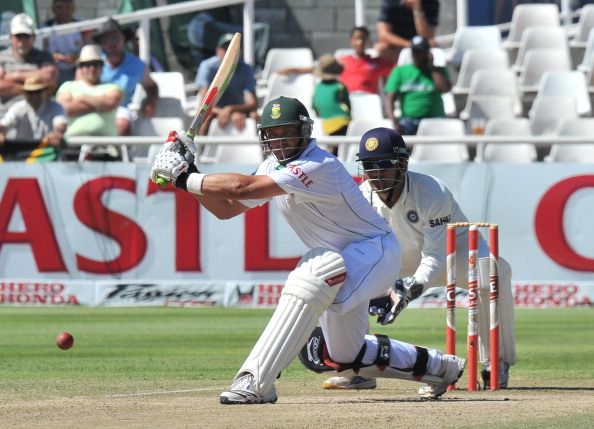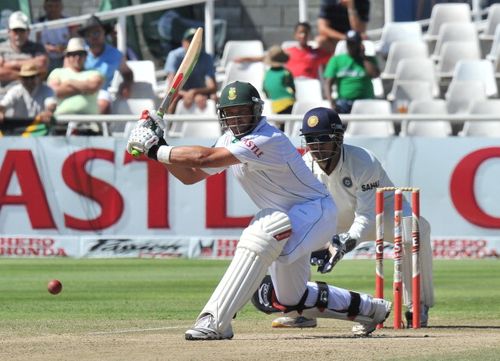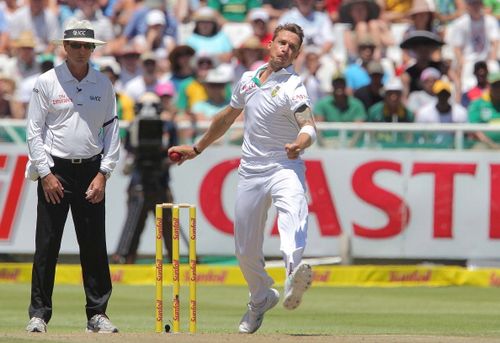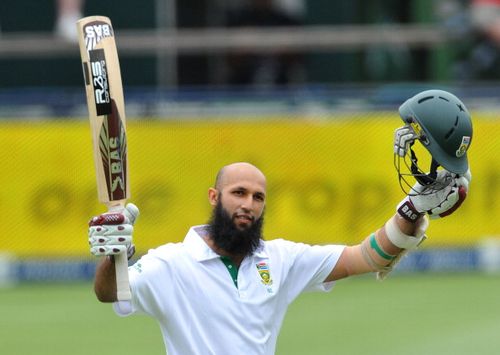
Woogie, Hoolio and Hash: The troika on top of the world
When Woogie stepped out to play international cricket for the first time, both Hoolio and Hash were 12-year old boys living out entirely different lives. Hash was born into a devout Muslim family originally from Gujarat, and spent his childhood in prayer and austerity, while looking up to his elder brother who was getting noticed in the town for his cricketing skills. Hoolio grew up right beside one of the biggest wildlife sanctuaries on the planet, and was in love with the outdoors. He dabbled in everything from skate-boarding to sport-fishing, before he found out he propelled cricket balls with exceptional pace.
Nine years later, the three of them wore identical jerseys as they stepped out to meet the English cricket team at Port Elizabeth. Woogie was now an experienced campaigner, the fulcrum of South African cricket and on his way to becoming one of the all-time greats. Hash had had an explosive domestic season that had earned him a call to the national side, but seemed edgy and nervous. Hoolio was all lightning and thunder, spewing deliveries at ridiculous speeds that he himself couldn’t seemingly control. The youngsters didn’t impress at first sight, and the veteran was getting old. None of them seemed to have a long run ahead.
Nine years later, in April 2013, Jacques ‘Woogie’ Kallis, Hashim ‘Hash’ Amla and Dale ‘Hoolio’ Steyn have been named in Wisden’s ‘Cricketers of the Year’, each one of them a table-topper in all sorts of ranking-charts.
Woogie

Jacques Kallis is the complete cricketer – the fifth highest run-scorer as well as the 17th highest wicket-taker in international cricket. He is widely perceived to be the greatest all-rounder ever to play the game. In the span of eighteen years, Kallis’s cricketing journey has been nothing short of epic – starting with the iron-defense he mounted against Shane Warne and Glenn McGrath in 1997, to centuries in five consecutive matches in 2003/04, the slew of ICC honours in the subsequent years, and the unforgettable World Cup campaign in 2007 in which he averaged over 80. Kallis has a rock-solid technique that is the envy of his peers, which makes him a formidable batsman to bowl to. Cricket pundits have compared his style of play to that of Sir Garfield Sobers – calm, collected and yet explosive when needed. Kallis is a player who slips into the nerve-center of the match and turns things around. Former skippers Sourav Ganguly and Michael Vaughan have hailed him as the greatest cricketer of all time.
Kallis has seen off two generations of South African cricketers, and he still stands tall among the new lot. Critics have accused him of not adjusting to the pace of a match and failing at key stages, but Kallis’s colossal frame has been a reassuring presence for South Africa for such a long time that it’s hard to imagine the Proteas mounting a winning total or chasing down a target without him in the thick of action.
Hoolio

Facing a Dale Steyn delivery is pretty much like attempting to cross the road in the middle of an F1 race; only in this case, the cars are aiming for you. Steyn is speed personified, often bowling in excess of 150 kmph, lethally accurate and generating incredible movement off the seam at these velocities.
For a bowler of his caliber, Steyn’s debut was rather tepid. Paired with the fire-breathing Makhaya Ntini, he returned with disappointing figures of 3/146 in a disappointing first Test. Alan Donald came to his rescue and helped him make a few tweaks to his action to help him channel all that pace into meaningful results.
A year later, he finished a home series against New Zealand with sixteen wickets. Since then, there has been no looking back.
Steyn specializes in carnage, the kind that those West Indians, Courtney Walsh and Ambrose, effected a few decades back. He charges in hot, and the batsman realizes this is not a delivery to be played, but one to be survived. Over the years, Steyn has demolished batting line-ups single-handedly; be it two ten-wicket hauls in consecutive Tests against New Zealand in 2007, dismantling India at home or manhandling the Aussies at the MCG, both in 2008. The trail of wanton destruction he left behind, including those memorable Test matches against West Indies and Bangladesh, helped him rise to the top of bowling charts, where he has stayed for an incredible amount of time.
Fast bowlers are said to have the shortest life-span among cricketers. Age shadows vigor, generating pace becomes harder each day, and aggression wanes with experience. Not for Steyn. He seems to grow deadlier with each passing series even though he’s pushing thirty. Ask Craig Cumming how it feels facing him, and he’ll tell you. Steyn had sent him to intensive care with one of ‘em head-hunting bouncers.
Hash

When Hashim Amla made his international debut, he didn’t impress anybody, even before he got to play ball 1. He crouched a bit with an awkward stance, shifted his weight from one foot to another too often and the long, flowing beard pushing through his helmet did not inspire confidence. Nor did the 36 odd runs he managed in his first 4 innings of Test cricket. He was dropped from the side for the next fifteen months.
They ridiculed him, and were not subtle about it.
In 2006, the ‘Mighty Beard’, as he came to be called, returned with a vengeance. He struck an unbeaten match-winning century the first chance he got, and followed it up with a smattering of fifties and hundreds, particularly in the subcontinent. His ODI debut followed two years later, and though things were quiet to begin with, it took him just 57 innings to rack up 3000 runs, making him the fastest ever to reach that figure. He developed a special liking for India, which was evident when he amassed close to 500 runs in two Tests during the Indian tour of 2010, and was dismissed just once. Two months later, he scored over 400 runs in South Africa’s 5-0 clean-sweep of West Indies. By the end of the year, he had scored 1000 runs apiece in both Tests and ODIs, at an average of over 75. Even as it was generally accepted that he couldn’t possibly go on to top that, he orchestrated an epic knock of 311 against England at the Oval. He batted days on end whilst fasting, as it was the holy month of Ramzan.
Amla’s batting is unorthodox and yet fluid and elegant. Coming in to bat at No. 3 most often, he is a picture of immense concentration, his monk-like patience only matched by the steadfastness with which he holds his ground. The only thing that’s harder for a bowler than getting his wicket is getting the smile off his face. The quiet shy man has stayed impervious to sledging – tactics of the worst kind – and aloof to any sort of controversy.
Amla is increasingly being seen as the successor to both Kallis and Graeme Smith. Experts have it he is being groomed for captaincy once Smith calls it a day. When that dawn arrives, Hashim Amla would have reserved a place for himself among the greats of cricket. His story would be nothing less than a fairy-tale; the story of a man who, after being called a ‘terrorist’ in bad taste, becomes the captain of one of the greatest cricket teams in the world.